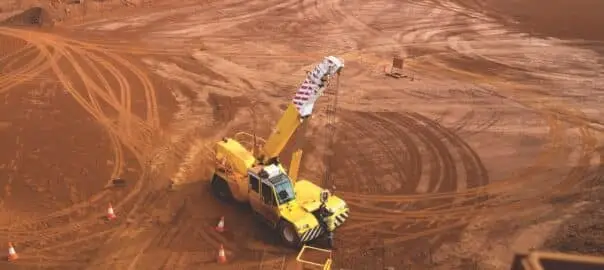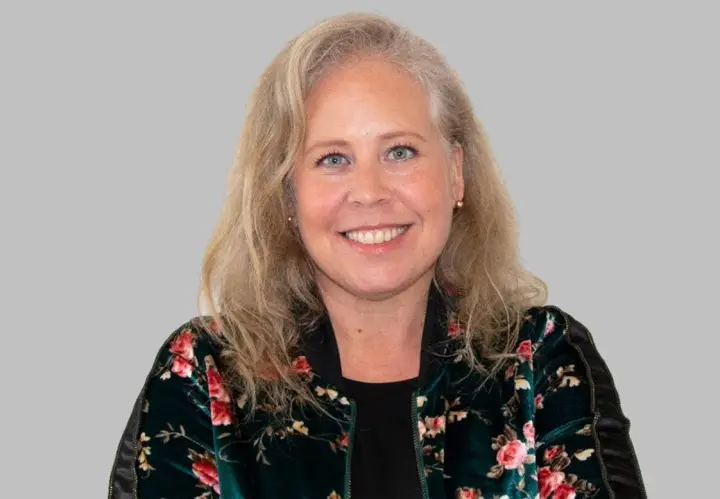Guardian Angel Safety delivers reliable end-to-end network, hardware and safety-monitoring solutions for the protection of lone and remote workers.

Lone workers are considered those who work by themselves or in the community with only limited support arrangements, exposed to risk by being isolated from the usual back-up support.
The potential risk of any serious injury from existing hazards is increased in these unique working environments, and such a situation requires additional precautions.
A major danger for remote or isolated workers is sustaining an injury that precludes self- rescue, such as overnight or during weekends or holidays, where assistance from other people may be limited.

Guardian Angel Safety’s founder and chief executive officer Petra Håkansson is passionate about the need to establish and maintain the safety and security of isolated workers engaged in various activities, often in remote settings.
With more than two decades spent working with an array of emergency communications technologies, principally GPS-based systems, Håkansson has extensive experience in the research, development, and implementation of tailored emergency monitoring solutions, as well as the regulatory landscape that employers are required to meet.
“We now provide critical response solutions to 30 per cent of all New Zealand councils, the country’s primary workplace health and safety regulator, WorkSafe, as well as Suncorp Group in Australia,” Håkansson told Safe to Work.
“Currently, we have a series of pilot programs underway with councils across Australia and our EVERYWHERE solution, a global situational awareness platform utilising Garmin and Iridium devices as well as the Iridium satellite constellation, Wi-Fi and cellular networks, is deployed extensively across the Australian mining industry.”
The company recently launched the Guardian Angel Portal with the aim of creating a more responsive, flexible and secure operational approach to the ever-changing safety requirements of solitary and remote workers.
The new portal enables the ability to securely view and manage all safety devices, data and planning for workers in real-time via a simple and intuitive interface with the ability to send immediate notifications to the most appropriate emergency services.
“Our portal provides our clients with a single source of aggregated information, enabling them to efficiently monitor and manage their workers,” Håkansson said.

The 24–7 real-time monitoring feature embedded in the Guardian Angel Portal results in a trustworthy end-to-end remote safety solution that ensures employers can deliver a high duty of care for the safety of their workforce.
“Connectivity and productivity are amplified, with our clients able to securely view and manage all safety devices and systems in real-time and in one place, including satellite devices, smartphone applications, cellular pendants, vehicle impact and rollover alerts, many location-based services, and APIs (application programming interfaces),” Håkansson said.
“The portal is hardware-agnostic, ensuring we can leverage new safety devices and technology innovations, providing our clients with the most up-to-date safety solution based upon their specific requirements.”
Workers’ ability to make contact with support services is vitally important, particularly in cases of emergency, and a robust and trustworthy communications system is required to do so in a reliable way.
The type of system chosen will depend on factors such as the distance from ‘home base’, the environment in which the worker will be located or through which they will be travelling (ie the terrain), expected environmental conditions, and access to power (to recharge batteries).
Expert advice and local knowledge may be needed to assist with the selection of an effective communication system.
“We’ve designed our portal to be very flexible so customers can add new devices and solutions any time, regardless of manufacturer, as their safety needs change,” Håkansson said.
“Within an organisation, people can be assigned to any monitored devices, able to be easily shared among different teams, with a tailored incident response solution.”
With all user and escalation contact details in one place, Guardian Angel Safety’s monitoring stations always have the latest response instructions for any device or user.
“Any changes made via the portal – for instance, a device is moved between workers – are monitored and instantly updated within the system, at the same time establishing an auditable data trail,” Håkansson said.
“We’ve created a highly intuitive system, reducing the potential for human error, as clients are no longer required to manually update spreadsheets from device manufacturers or forward them to us to make changes.”
Data sent to the cloud-based portal is fully encrypted and policy-based permissions management ensures the information can only be accessed by authorised employees.
Guardian Angel Safety’s solutions circumvent the emergency number process and link customers to its low-latency response software.
The company’s A1-graded monitoring stations are staffed by trained operators who ensure a timely response.
Guardian Angel Safety is committed to the ongoing development of its portal, welcoming feedback to meet employers’ health and safety laws and security requirements throughout Australasia and the Pacific.
To enable further integration, Guardian Angel Safety can also provide access to an API key and sandbox testing environment, allowing customers to connect their HR software to maintain their users and escalations automatically.
Håkansson said the portal would provide a valuable opportunity to collect industry insights on emergency or safety-related incidents through anonymised data collection and retention.
“We work with a wide range of organisations with remote and mobile workers, including government agencies, regional councils and environmental organisations; finance, banking and insurance; health boards and mobile community health providers; and forestry, mining, farming and agriculture,” she said.
“Our portal creates a unique opportunity to assist our clients further from a risk and prevention standpoint, as we’ll be able to analyse data to gain insights into why and where incidents are happening.”
Good practice for managing remote workers includes having a communication schedule between the worker and someone able to raise an alarm if the worker fails get in touch.
Guardian Angel automates this function using scheduled welfare checks in the solution, which pops up asking the worker to confirm they are okay at chosen intervals. If they fail to respond, a “failed welfare check” goes through to the monitoring station where the operators will follow the client instructions and co-ordinate a response.
A policy on frequency of contact, and the action to be taken if contact is not received, should be developed and provided to all relevant workers. This could also include family members as a point of contact, other organisations in the area, and community leaders if they are able to raise the alarm.
Procedures developed should be tested, a process that can be configured through the Guardian Angel Portal and updated as required.
“Having the right safety solutions for lone and remote workers is all about planning for unforeseen situations and ensuring the appropriate response,” Håkansson said.
“The protection of employees’ physical safety will lead them to feel psychologically safer and happier in their workplace, and in this way Guardian Angel’s solutions fundamentally contribute to an organisation’s compliance with the ‘S’ in ESG (environmental, social and governance).
“We are striving to be the gold standard in the provision of protection for mobile workers operating alone or in remote and isolated environments across Australasia, not for financial gain but to implement safety solutions that will absolutely deliver peace of mind and real safety outcomes.”



